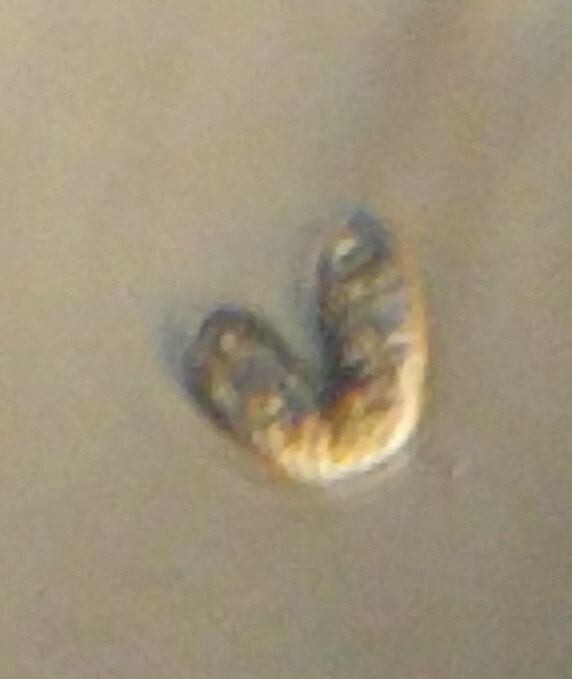ASSETT and Foldscope: A marriage made in microcosmos heaven
 Apr 19, 2018 • 5:47 AM UTC
Apr 19, 2018 • 5:47 AM UTC Unknown Location
Unknown Location 140x Magnification
140x Magnification Microorganisms
Microorganisms
laksiyer
Human observer of life. https://sukshmadarshin.wordpress.com
97posts
1255comments
5locations

The past 6 weeks or so I have been tinkering with Tetrahymenas thanks to the wonderful ASSETT program run by Cornell University. ASSETT or Advancing Secondary Science Education through Tetrahymena is an NIH funded program that provides modular science education material for schools, using Tetrahymena as a model system. Each module is well designed keeping the teacher and students in mind (https://tetrahymenaasset.vet.cornell.edu/science-modules/module-protocols/). They even send equipment like centrifuges for the period of the experiment. When I heard of this program the first thing that came to mind was that every school in the US should make full use of the ASSETT program and its many protocols to understand basic biological problems through ciliates. The second thing that came to mind was that for biologists working on various model systems, the ASSETT program is a fantastic model. We should have such teaching model systems for other branches of life and all over the world . Here’s another thought.
“Combine the ASSETT and Foldscope programs and you have a marriage made in microcosmos heaven”.
Talking of marriages. Did you know that Tetrahymena thermophila has seven mating types ( Click for Reference ). What does that mean anyways? Humans have two mating types that we call male and female. Bdelloid rotifers have no mating types– why mate at all they say, some fungi have thousands of mating types– thousands!! One of the key aspects of mating is meiosis and recombination. Two opposite mating types come together and recombine chromosomes to generate new combinations. This is a way to rid the cell of deleterious mutations, or else organisms might go into what is called Muller’s ratchet. Imagine an organism that doesnt mate at all. With each generation it will only accumulate mutations, as it has no way of getting rid of them and soon it become extinct. Now why are bdelloid rotifers not extinct?
Ok, so here is a mating experiment. One morning, I took two opposite mating types of Tetrahymena thermophila (strains CU428 and B2086). These are grown in a minimal medium, equal volumes were taken and mixed in a petridish. When Tetrahymenas are starved, opposite mating types signal each other, reorganize their oral apparatuses, fuse, and exchange DNA through their micronuclei. What is the mating type of the progeny? Apparently, the system resets and like a roulette one of the seven is chosen again. Rest of my notes in the movie
“Combine the ASSETT and Foldscope programs and you have a marriage made in microcosmos heaven”.
Talking of marriages. Did you know that Tetrahymena thermophila has seven mating types ( Click for Reference ). What does that mean anyways? Humans have two mating types that we call male and female. Bdelloid rotifers have no mating types– why mate at all they say, some fungi have thousands of mating types– thousands!! One of the key aspects of mating is meiosis and recombination. Two opposite mating types come together and recombine chromosomes to generate new combinations. This is a way to rid the cell of deleterious mutations, or else organisms might go into what is called Muller’s ratchet. Imagine an organism that doesnt mate at all. With each generation it will only accumulate mutations, as it has no way of getting rid of them and soon it become extinct. Now why are bdelloid rotifers not extinct?
Ok, so here is a mating experiment. One morning, I took two opposite mating types of Tetrahymena thermophila (strains CU428 and B2086). These are grown in a minimal medium, equal volumes were taken and mixed in a petridish. When Tetrahymenas are starved, opposite mating types signal each other, reorganize their oral apparatuses, fuse, and exchange DNA through their micronuclei. What is the mating type of the progeny? Apparently, the system resets and like a roulette one of the seven is chosen again. Rest of my notes in the movie
Final thoughts.
Why is the mating pair frequency low. Do the frequencies change depending on resources or is it dependent on the number of collisions between opposite mating types. Does the frequency vary between mating pairs? How can we capture all the intermediate steps during mating? Can we see the micronucleus move from one ciliate to another with a foldscope.
Why is the mating pair frequency low. Do the frequencies change depending on resources or is it dependent on the number of collisions between opposite mating types. Does the frequency vary between mating pairs? How can we capture all the intermediate steps during mating? Can we see the micronucleus move from one ciliate to another with a foldscope.
Sign in to commentNobody has commented yet... Share your thoughts with the author and start the discussion!

 0 Applause
0 Applause 0 Comments
0 Comments_300x300.jpeg)

















